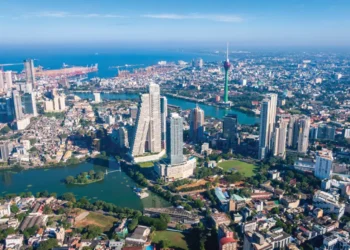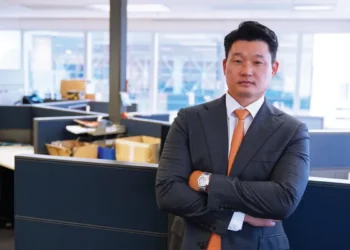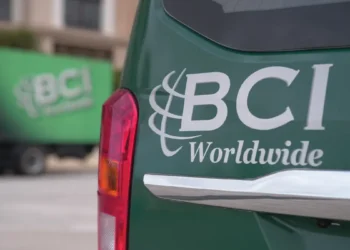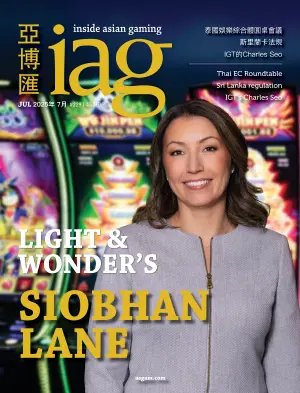Having endured a hectic three years at Marina Bay Sands which saw him promoted to Chief Operating Officer while dealing with a US$1 billion renovation project and the challenges of the COVID-19 pandemic, Paul Town is now firmly focused on re-establishing the property’s status as a regional icon.

Ben Blaschke: Paul, it wasn’t so long ago that we were talking about the challenges of the COVID-19 pandemic, but we are now well and truly in the post-pandemic era. With that in mind, what have the main challenges been in terms of emerging from the pandemic and returning to full capacity?
Paul Town: Right now, we have more than 10,000 staff, and one of the features of Marina Bay Sands was that we didn’t do any layoffs through COVID. We always wanted our recovery to be strong so we wanted to retain as much of our talent as we could. A lot of our team members have been with us from day one, they are long-termers, so it’s a lot of the soul of the property that we wanted to retain.
Progressively activating them hasn’t been as challenging as it has been for some in the market. It’s true that all around the world there are labor shortages at the moment and Singapore is no exception, but we feel like we’ve really benefited by staying committed to our team members during the pandemic, because if you look across the property now, all of our facilities and restaurants are fully open and fully active at all the pre-pandemic opening times. We haven’t had to adjust capacity.
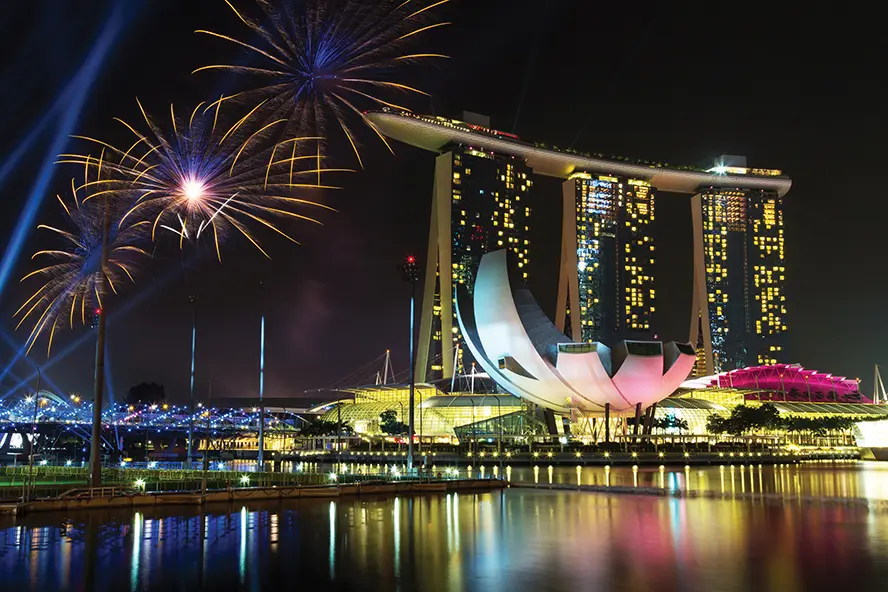 BB: The pandemic came along at an interesting time for you personally, having only joined MBS a few months earlier. How did you handle that initial period?
BB: The pandemic came along at an interesting time for you personally, having only joined MBS a few months earlier. How did you handle that initial period?
PT: I joined [MBS] in November 2019 so I had four months of normal and then a very interesting time. And this elevation project that we are currently on, that was one of the things I came here to do, so one minute we were here designing these hotel rooms and looking at coffee machines and glasses, the next we were in a pandemic taskforce trying to manage our way through that. We were able to do both of those activities through the pandemic, but there was so much time devoted to ensuring we could reopen safely and had our recovery plan in place. Nobody had any real experience in doing that and I hope not to do it again.
BB: You’ve since been promoted to Chief Operating Officer following the departure of Andrew MacDonald in mid-2021. How have you found the transition and taking on greater responsibility?
PT: Yeah, well I came as the non-gaming guy overseeing all of the non-gaming touchpoints including hotel, retail, food and beverage, shared service and so on. Following Andrew’s departure, we had a lot of discussions around structure. Of course, whilst I have been a non-gaming guy for almost all but two or three years of my career, that time has been spent in IRs working very closely with the gaming environment. I’m very familiar with gaming and the marketing activities around gaming operations, so we determined that I would be able to take that on, which has been very exciting. And I’ve loved it. I think taking on some of that core gaming responsibility has been fantastic, but also part of my focus has been to flow some level of hospitality as well into that experience for our customers. We really see our customers as very wholistic. Nobody is coming here just for a singular experience. They are coming here for an IR experience, so we know that they are going to hit various touchpoints along the way across all of our amenities.
 Part of the advantage of having a guy like me oversee that journey is I can make sure the experience is consistent.
Part of the advantage of having a guy like me oversee that journey is I can make sure the experience is consistent.
And not all IRs deliver that, because people have very different approaches to how hospitality is delivered.
BB: So what is your vision for the customer experience at MBS?
PT: We certainly have some customers who spend their entire time here at MBS, but we are also starting to develop some off-property touch points for our customers. I think Singapore is a destination in its own right, and we think there is a big benefit to us partnering with other partners and experiences in Singapore and taking our customers there. That will be a feature of our development over the next few years – making sure our customers do that.
I think post pandemic we’ve seen a bit of an increase in length of stay from visitors into Singapore generally and that plays in our favor as well. We want to be part of driving that length of stay, so let’s start giving them these lifestyle opportunities.
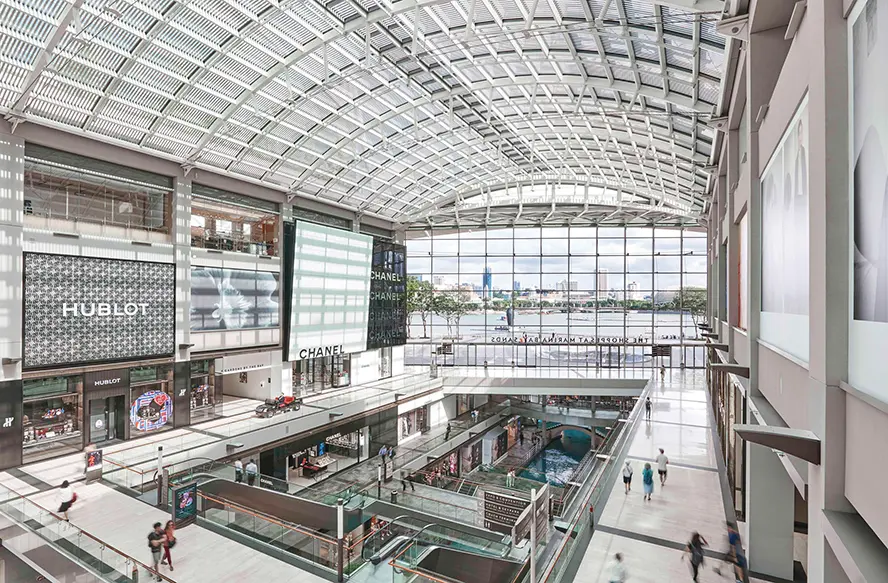
BB: It was recently suggested to me that Singapore doesn’t seem like the most obvious place to develop two very large integrated resorts, yet both MBS and Resorts World Sentosa have proven themselves to be among the most successful IRs in the world since opening over a decade ago. Why does the Singapore IR model work so well?
PT: I think it’s a little bit about what we just spoke about. Singapore as a destination in itself offers so much. There are other attractions here, it’s an easy place to be, it’s safe. Even post-pandemic Singapore is seen as a bit of a highlight for how it handled the pandemic so well, which I think has some gravitas in the new market. The geographic location also helps, with Singapore being a bit of a hub. It always has been for other segments like corporate travel and leisure travel, but for this IR market it is seen as very accessible.
The government is also a very positive and forward-thinking government, so when it was selecting its IR operators it ensured it had sufficient say in the process to make sure the IRs would be attractive and iconic enough to be able to draw people here. So that collection of factors has helped this destination.
 BB: MBS specifically has put Singapore on the map and is an internationally recognized icon of the city’s skyline, which has made it an integral part of Singapore’s identity. Can you talk a bit about this responsibility and how MBS views its role in Singapore tourism?
BB: MBS specifically has put Singapore on the map and is an internationally recognized icon of the city’s skyline, which has made it an integral part of Singapore’s identity. Can you talk a bit about this responsibility and how MBS views its role in Singapore tourism?
PT: You do actually feel that burden on your shoulders but it’s a really good burden because we’re proud to have that status. We also know it gives us the ability to talk to government and focus on really positive initiatives to further enhance that status.
This refurbishment we’ve talked about, this level of investment that we are placing into the property, that’s a little bit about making sure the iconic status is retained. We know that everyone goes outside and takes photos of MBS, of that amazing iconic architecture, and I think our next 10 years is about supporting that iconic status and providing more and more touchpoints beyond just the architecture – things like the rooms, the restaurants, the service offering inside the property, IR 2.0. All these things are part of that burden of responsibility.
It’s fantastic to be considered such a key part of the Singapore tourism landscape. More than 70% of our team members are Singaporeans or Permanent Residents, and and they make up an even higher proportion of senior management, so although yes, we are an American company, we have such a strong Singaporean heart and soul and all of these people are very motivated to be able to contribute something more broadly to Singapore. Elevating that iconic status is part of what motivates that group.
 BB: How do you view the MICE segment for both Singapore and MBS and how do you see this segment developing in the future?
BB: How do you view the MICE segment for both Singapore and MBS and how do you see this segment developing in the future?
PT: MICE is absolutely very important to us and as you probably know it plays an important part in our company’s (Las Vegas Sands) history. We really started out as a MICE company, and there has been significant investment and deployment into MICE here [in Singapore] as well.
Of course, during COVID that was one of the most affected areas and one of the last to reopen. There was a lot of commentary through COVID as to whether MICE would ever come back to what it was. We certainly didn’t know. We made some pivots in the way we delivered MICE and introduced virtual and hybrid formats, which in a COVID context were quite successful but still nothing like normal times. The good news is what we’re seeing now seems to indicate that we will return to something like normal times. MICE is a bit hard because the business we have in the books in 2023 was booked pre-COVID, so we haven’t really seen demand affected yet. It’s hard to get a gauge but if we’re looking at booking pace for the end of the year, it looks as strong as pre-pandemic, so we do believe it will come back.
 BB: Who do you see as your main regional competitors in the MICE space?
BB: Who do you see as your main regional competitors in the MICE space?
PT: We have some pretty strong competition here in Singapore. There are two or three significant MICE facilities here and we are often co-bidding for business. I think we know that Australia has a strong MICE deployment in Sydney, Melbourne and Perth; Macau, while still closed, we assume will emerge and be very strong in MICE; and Bangkok has a good MICE facility. But a little bit like the other markets we discussed before, Singapore is unique for MICE because it often gets selected as the destination first and then the operators here are evaluated individually from there.
BB: MBS announced a US$3.3 billion expansion project a few years back, although COVID-19 has caused some delays. Where is this project positioned right now?
PT: We’re well into the room upgrades now for the US$1 billion reinvestment programme for our existing property which will include renovation of all rooms and suites in Towers 1 and 2 by the end of 2023. Along with the significant expansion of restaurants and public areas, most of that will be completed by halfway through 2024 for the existing IR. And that’s a very, very significant project for us because if you look at the 10-year history here, yes it’s been a very successful IR and very iconic offering, but we’ve never engaged in an elevation like this. It will feel to many of our customers like a completely new integrated resort when they come here.
 For the future, for IR 2, we’ve commenced some site preparation works next door. The main works, the proper part of that project, is yet to start. We’re still in some final discussions around configuration and programming and some of that is internal, some with government.
For the future, for IR 2, we’ve commenced some site preparation works next door. The main works, the proper part of that project, is yet to start. We’re still in some final discussions around configuration and programming and some of that is internal, some with government.
The pandemic delay caused us to look at some elements of that product that we wanted to change. We feel we are very close to finalizing that now. As for a specific timeline on completion it’s hard to say because some of those elements will impact that. But the highlights are the 15,000-seat arena, the first of its type in Singapore with not a lot of regional competition for that type of arena. It will be the first time Singapore will have been able to host an event at that scale and in that kind of environment ever, so it really brings a new capability to market with A-List entertainers able to perform there.
And then there will be a new signature hotel with a lot of MICE space. Generally with IR 2, the premise is a little bit more intimate, a more exclusive energy compared to IR 1, so we’ll deliver a lot more with a slightly different flavor to the existing IR.

BB: Why is this expansion so important for the company?
PT: Well the arena model certainly worked for us in Macau and we’ve seen it work around the US as well. We think as these customers change and become long-stay and evolve to the lifestyle driven experiences, I think that arena plays really well to what we’re doing here. The intention will be to deliver constantly evolving programming to give people more reasons to come and stay. One week they might be coming to see Bruno Mars and the next it might be the NBA. We’ll be able to change the customer journey via these signature experiences every few weeks.
In terms of hotel capacity, it’s no secret that this hotel is always under quite heavy demand, so to deliver more rooms with a slightly different flavor I think can be very valuable. Likewise, given the demand we’re seeing in MICE, to offer a more ambient and exclusive MICE experience is something we can do incrementally to what we currently have. So it all adds.

BB: Are there any concerns that the addition of the fourth hotel tower might detract from the iconic architecture that exists currently?
PT: Our iconic architectural status is absolutely part of our history, and with the fourth tower we intend to retain or even enhance that iconic status. When you look at the rendering of the fourth tower, we believe it absolutely enhances the iconic look and feel of what MBS is. It’s critically important to us that this remains for the IR.
BB: Do you see any further scope for expansion moving forward?
PT: We are always looking for opportunities if we have the demand to extend our offering. I think initially, aside from what we’re doing now, we also believe with this lengthening of stays we want to extend the MBS experience off property a lot more and partner more broadly with Singapore and the precincts around Marina Bay. We don’t have to be 100% self-contained. If we can deliver more of a precinct-like or Singapore-like experience, maybe it drives more visitation. We’ve certainly got some touchpoints in areas like golf that will extend our experience and we’re prepared to invest in those experiences going forward.
 BB: As we move out of COVID-19 and tourists – be they gaming or non-gaming visitors – return, are you seeing any significant behavioral changes?
BB: As we move out of COVID-19 and tourists – be they gaming or non-gaming visitors – return, are you seeing any significant behavioral changes?
PT: A little bit around length of stay, which then drives a different activity, so we are seeing more of an IR-type behavior from all of our segments. Historically some customers focus on one portion of the IR, but we see now that almost all of our customers tend to hit more touchpoints. They want a retail experience partnered with food and beverage and entertainment. There is no such thing, particularly for someone staying on-property, as a customer hitting just one touchpoint. So going back to when we were talking about my contribution, it’s making sure that journey is satisfied.
BB: Finally Paul, how has the decline in Chinese visitors due to COVID-19 changed your approach to marketing and sourcing customers?
PT: We’ve always had a marketing activation and presence throughout Southeast Asia in particular. It’s true that China is an important market for us, but we’re also very diverse here, we have a strong locals market which we are very active in driving marketing messages to – particularly through social media but as these Southeast Asian markets have reopened we’ve also ramped up our activity in those markets.
There have been some interesting markets emerge as real high performers post pandemic too. Australia is one of them when you look at cash, hotel, visitation, F&B. And the intent going forward is to reintroduce the new version of MBS in the long-term – these new refurbished products, these new touchpoints that we have that people might not know about.












